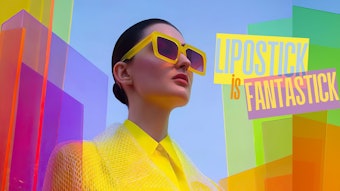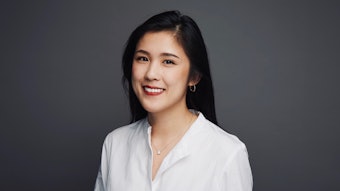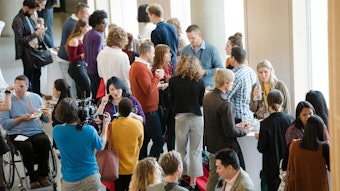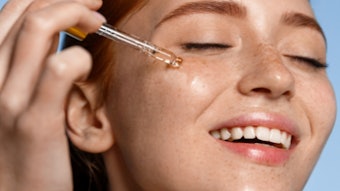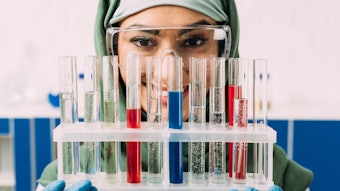
Editor's note: Uli Osterwalder, an industry-renowned sunscreen expert, attended the Florida SCC Sunscreen Symposium, held Sept. 12-14, 2019, in Lake Buena Vista, FL. Here he shares his personal insights from the talks presented.
"I found this year’s edition of the Sunscreen Symposium very good, like most people [have said]. This year’s symposium attracted a record crowd of ~550 (so I have heard). For me, the highlights were [as follows].
Sunscreen Safety
"Theresa Michelle, M.D., from the FDA [U.S. Food and Drug Administration] and Carl D’Ruiz, from DSM, my former regulatory colleague at Ciba, both elaborated on the safety aspects of UV filters and of sunscreens. Since the thalidomide crisis in Europe almost 60 years ago, which was avoided in the U.S. by not approving the new substance too early, the FDA [has been] very reluctant to approve new actives when they can enter the body.
"Therefore, the FDA is demanding a maximum use trial (MUsT) and additional data to conduct a risk analysis if substantial quantities are found in blood and urine. In relation, Carl D’Ruiz presented DSM’s approach to registering the "new" [to the U.S.] UV filter bemotrizinol, a broad-spectrum filter that had been approved in Europe almost 20 years ago."
More specifically, D'Ruiz shared with Cosmetics & Toiletries the idea of using the MUsT test to serve as a "control formulation" and "release" test to shorten the process of approving a sunscreen to market. The bottom line: if in vitro penetration tests reveal a sunscreen has equal or lesser permeation than the control, it confirms GRASE safety and can go to market. If not, the test formula should be reformulated and the test repeated.
SPF Testing of the Future
Eduardo Ruvolo, medical affairs, clinical operations and consumer research director for sun care at Bayer, U.S., described, "Hybrid Diffuse Reflectance Spectroscopy (HDRS): A Non-invasive Assessment Method for SPF, UVA-PF and CW." Uli Osterwalder, principal and owner at consulting firm Sun Protection Facilitator (SPF) GmbH, presented "ALT-SPF Methods: Imminent Breakthrough." Also, Dennis Lott, president of Lott Research Inc., Florida Suncare Testing, spoke on "How to Make Protective Sunscreen Products."
SPFindoor vs. SPFoutdoor: Osterwalder continued, "What Dennis Lott summarized is potentially earth-shattering for the sun care industry. His results show that the SPF measured outdoors under real conditions is much less than the SPF measured indoors under laboratory conditions.
"From one of his past presentations, we had already learned that with a uniformly protecting foundation/makeup of a nominal SPF 20, less people [were sunburned] than with an SPF 45 sunscreen. The reason is that sunburning is also partially caused by long UVA1 and visible wavelengths, which are not simulated in the laboratory. So far, little can be found about this topic but it is not completely new.
"Brandt/Rohr/Schrader mentioned it back in 2001 without quantifying it,1 and Diffey/Osterwalder concluded recently that under real life conditions SPF < 25, the visible range is not covered at all.2
'What Dennis Lott summarized is potentially earth-shattering for the sun care industry.' -Uli Osterwalder
HDRS to measure vis and more: "From Eduardo Ruvolo’s talk, we learned that the hybrid diffuse reflectance spectroscopy (HDRS) method can also measure protection in the visible range. Furthermore, since HDRS is not invasive, measurement can be repeated on the same subject on the same spot. This opens a whole new variety of options to assess sun protection. Furthermore, HDRS can yield data beyond simply SPF; i.e. UVA-PF, water resistance and the visible range."
How SPF measures up: "[I also] gave an overview of all currently available alternative SPF methods, namly in vitro transmission, HDRS and in silico. But my focus was on explaining how alternative SPF methods should be evaluated against the gold standards ISO 24444.
"In their landmark paper in The Lancet 1986, Bland and Altman pointed out that a correlation between two measurement methods is insufficient to assess agreement. Their method looks at the pairwise difference of two methods and is now the gold standard in method assessment.
"With the alternative SPF methods, a Consortium ALT-SPF has been formed to generate Bland Altman data and beyond. The 'variance component model' developed by German mathematiciians from QUODATA will allow extraction of possible systematic errors beyond the method bias, such as sample bias or laboratory bias."
Formulating Sunscreens
Regarding formulating, Osterwalder noted, "In the formulation course, Mark Chandler and Julian Hewitt gave an update on many aspects of sunscreen formulation. For me, it was especially striking to see how Julian Hewitt often used the Sunscreen Simulator (BASF) and the Sunscreen Optimizer (DSM) to illustrate various UV filter platform scenarios and strategies.
"In the face of the uncertain regulatory situation regarding future UV filter availability in the U.S., Mark Chandler advocated a flat sunscreen protection profile with less UVB protection and more UVA protection, leading to generally lower SPF-numbers but possibly better overall protection and higher Vitamin D production." For more on this, see the Cosmetics & Toiletries digital exclusive, "Expert Opinions on Sunscreens."
Final Comment
Osterwalder concluded, "I am convinced that the earth-shattering event [in sunscreens] will eventually come in the form of greater awarenesse for the big difference between SPFindoor and SPFoutdoor."
Acknowledgments: Special thanks to Uli Osterwalder for sharing his insights.
